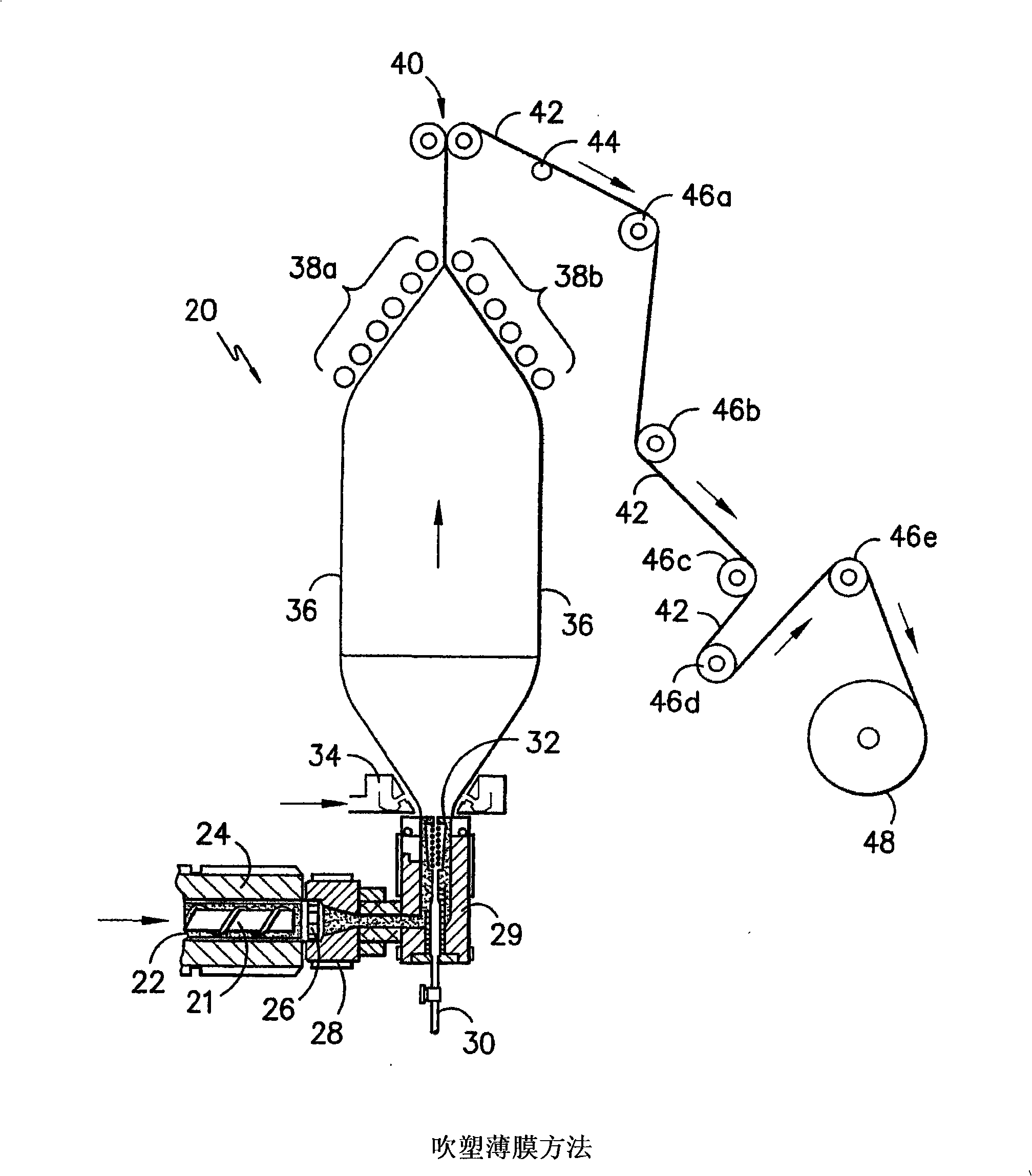Film and method of making film
A technology of blown film and cast film, applied in the field of film and its manufacture
- Summary
- Abstract
- Description
- Claims
- Application Information
AI Technical Summary
Problems solved by technology
Method used
Image
Examples
Embodiment 1
[0053] Calcium HHPA in LLDPE
[0054] To a linear low density polyethylene (LLDPE) common in the film industry with a density of 0.917 g / cm3 was applied 1000 ppm of the following mixture of HHPA calcium compounds:
[0055]
[0056] Also add above-mentioned compound and standard stabilizing package (500ppm 1010, 1000ppm Irgafos 168 and 800ppm zinc stearate). The resulting mixture was physically mixed, twin-screw compounded, and pelletized. The resulting composite resin was then fabricated into films with a thickness of 25 microns using standard blown film processes at a blow-up ratio of 2.5. The resulting film has the following properties:
[0057] Table I. Physical properties of LLDPE blown film
[0058] sample
yield stress
(psi)
breaking stress
(psi)
%Elongation
@break
1% Secant Die
Volume (psi)
Elmendorf
tear (g)
Falling Dart
strike (g)
ASTM
method
D882
D882
...
Embodiment 2
[0062] Example 2: Calcium HHPA in MDPE
[0063] Apply 1000ppm calcium HHPA and standard stabilization pack (500ppm 1010, 1000ppm Irgafos 168 and 800ppm zinc stearate). The resulting mixture was physically mixed, twin-screw compounded, and pelletized. The resulting composite resin was then fabricated into films with a thickness of 25 microns using standard blown film processes at a blow-up ratio of approximately 2.5.
[0064] The resulting film has the following properties:
[0065] Table III. Physical properties of MDPE blown film
[0066] sample
yield stress
(psi)
breaking stress
(psi)
%Elongation
@break
1% Secant Die
Volume (psi)
Elmendorf
tear (g)
Falling Dart
strike (g)
ASTM
method
D882
D882
D882
D882
D1922
D1709
control
2394 / 2466
3580 / 3027
476 / 589
45.2 / 48.3
43 / 331
76
Clarified
...
Embodiment 3
[0071] Calcium HHPA in various types of polyethylene
[0072] Add 1000ppm HHPA calcium to several types of polyethylene (PE) and standard stabilization packs (500ppm 1010, 1000ppm Irgafos 168 and 800ppm zinc stearate). The resulting mixture was physically mixed, single-screw compounded, and pelletized. The resulting composite resin was then fabricated into films with a thickness of 50 microns using standard blown film processes at a blow-up ratio of approximately 2.0. The resulting film has the following optical properties:
[0073] Table V. Optical properties of PE with different comonomer types and catalysts
[0074] resin
PUM
| Property | Measurement | Unit |
|---|---|---|
| density | aaaaa | aaaaa |
| density | aaaaa | aaaaa |
| thickness | aaaaa | aaaaa |
Abstract
Description
Claims
Application Information
 Login to View More
Login to View More - R&D
- Intellectual Property
- Life Sciences
- Materials
- Tech Scout
- Unparalleled Data Quality
- Higher Quality Content
- 60% Fewer Hallucinations
Browse by: Latest US Patents, China's latest patents, Technical Efficacy Thesaurus, Application Domain, Technology Topic, Popular Technical Reports.
© 2025 PatSnap. All rights reserved.Legal|Privacy policy|Modern Slavery Act Transparency Statement|Sitemap|About US| Contact US: help@patsnap.com



